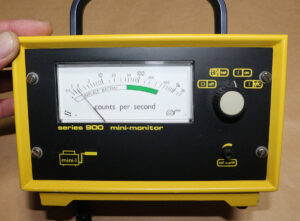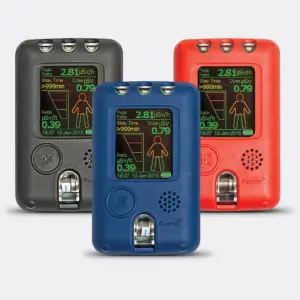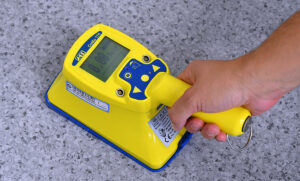Top 10 Instruments Used to Measure Radioactivity And How They Actually Work
Accuracy in measuring radioactivity is not just important—it’s critical to safety, compliance, and research integrity. Across nuclear facilities, medical labs, and environmental monitoring stations, reliable radiation detection ensures informed decisions and protected environments. With instruments ranging from handheld and wearable devices to benchtop and automated systems, each designed for specific applications and sensitivities, this guide explores ten of the most common radiation measurement tools, how they work, and where they’re used.
 Geiger-Müller (GM) Counter
Geiger-Müller (GM) Counter
- Purpose: Detects ionizing radiation, alpha, beta, and gamma rays.
- Used in: Radiation surveys, nuclear power plants, lab safety.
- How it works: Radiation ionizes gas in a sealed tube, triggering an electrical pulse that gets counted. A staple in handheld radiation meters.
Scintillation Counter
- Purpose: Measures radiation through light flashes called scintillations.
- Used in: Nuclear medicine, environmental monitoring, radiological labs.
- How it works: Radiation excites a scintillating material, which emits light detected by a photomultiplier tube for high sensitivity readings.
Ionization Chamber
- Purpose: Measures precise radiation dose and exposure levels.
- Used in: Radiology departments, radiation therapy, calibration labs.
- How it works: Radiation ionizes air inside the chamber; the electric charge collected is proportional to radiation dose.
Thermoluminescent Dosimeter (TLD)
- Purpose: Tracks accumulated radiation exposure over time.
- Used in: Occupational radiation monitoring, healthcare, nuclear facilities.
- How it works: Radiation excites electrons in a crystal; heat releases stored energy as light, which indicates dose level.
 Electronic Personal Dosimeter (EPD)
Electronic Personal Dosimeter (EPD)
- Purpose: Provides real-time radiation dose tracking with alarm functions.
- Used in: Nuclear power plants, emergency response, industrial radiography.
- How it works: Solid-state sensors detect dose, displaying it on a digital screen with real-time alerts for threshold breaches.
Neutron Detector
- Purpose: Detects neutron radiation, often missed by other detectors.
- Used in: Nuclear reactors, physics research, border security.
- How it works: Neutrons interact with materials like helium-3 or boron trifluoride to generate detectable charged particles.
Proportional Counter
- Purpose: Detects and differentiates between types of radiation.
- Used in: Alpha and beta contamination checks, research applications.
- How it works: Radiation ionizes gas inside the detector; the pulse size varies by radiation energy, allowing discrimination.
Liquid Scintillation Counter
- Purpose: Measures low-energy beta emitters like tritium or carbon-14.
- Used in: Biological research, groundwater testing, radiolabel tracing.
- How it works: Sample is mixed with a scintillating fluid; emitted light is counted to determine radiation levels.
Gamma Spectrometer
- Purpose: Identifies gamma-emitting isotopes and quantifies them.
- Used in: Nuclear forensics, isotope identification, radioactive waste analysis.
- How it works: Gamma rays interact with a detector crystal (like NaI or HPGe), producing an energy spectrum to identify radionuclides.
 Surface Contamination Monitor
Surface Contamination Monitor
- Purpose: Detects radioactive contamination on surfaces.
- Used in: Decontamination, lab safety, nuclear site cleanups.
- How it works: A handheld probe scans surfaces using GM or scintillation detection to spot radiation presence.
Why Radiation Detection Tools Matter
Each of these instruments plays a vital role in ensuring radiation safety and compliance. Whether you’re choosing the best radiation detector for field work, monitoring worker exposure, or performing precision lab analysis, selecting the right tool depends on:
- The type of radiation (alpha, beta, gamma, neutron)
- The level of sensitivity required
- Whether real-time or accumulated data is needed

